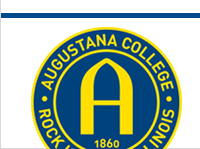Document Type
Poster
Publication Date
Spring 4-2022
Disciplines
Hydraulic Engineering | Terrestrial and Aquatic Ecology
Description, Abstract, or Artist's Statement
Crystal Creek in Davenport Iowa drains suburban and park areas before draining into Duck Creek, a tributary of the Mississippi River. Contact recreation is a designated use for all the streams. As a pilot project with the city of Davenport, Augustana College’s Upper Mississippi Center assessed this stream in the summer of 2021 to determine if relatively inexpensive monitoring tools could be used to assess possible sewage contamination in that stream. Running through multiple residential areas, sewer lines follow the studied region of the creek, leading to the hotspot focus that was conducted by student researchers. Fecal coliform, optical brighteners, conductivity, pH, dissolved oxygen, biological oxygen demand (BOD, phosphorous, nitrate, and ammonia were assessed in Crystal Creek. The study was conducted in a two-step process. First, on June 21, 2021, seven sites were identified for preliminary screening. Second, based on these results, 27 sites were identified for detailed sampling and analysis on 7/22/21. Water samples in this study were collected within the same six hours on days where there had not been precipitation for at least three days prior. Samples were tested on-site for dissolved oxygen, pH, and Conductivity. Water samples were collected at 14 of these sites and tested for BOD, ammonia, E. coli, fecal coliforms, and Optical brighteners. Any combination of decreased pH, increased ammonia or phosphate, decreased dissolved oxygen, increased BOD, conductivity, E. coli or coliforms, were considered potential contamination sites. Optical brighteners were dropped from the analysis due to high background fluorescence in all samples. One site, downstream of a place where the sanitary sewer line crosses the creek, showed a combination of reduced pH, increased ammonia, BOD, fecal coliforms, and to a lesser extent, reduced dissolved oxygen. A second upstream site showed a combination of high fecal coliforms and E.coli, increased BOD, a small dip in pH, and a small peak in ammonia. This is a reach where the sanitary sewer runs parallel to but near the creek. We recommended that the city use a combination of smoke and/or dye injection tests to confirm exfiltration in the identified reaches Furthermore, understanding the origin of these pollutants will allow local management to make necessary repairs to applicable sewage systems to better protect public health and recreational uses of such waters.
Augustana Digital Commons Citation
Schumacher, Adam; Reisner, Michael; and Geedey, Kevin. "Hot Spot Analysis of Potential Sanitary Sewer Exfiltration in Crystal Creek Watershed" (2022). Independent Research Projects.
https://digitalcommons.augustana.edu/umcindependent/5
